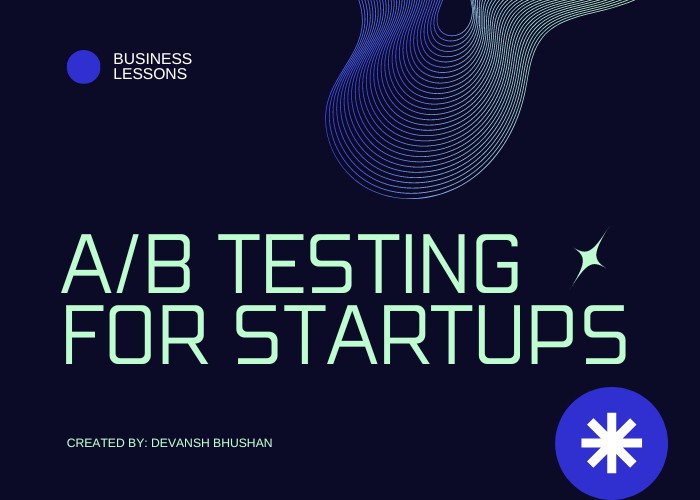In a market driven by consumer preferences, businesses constantly seek strategies to enhance user experience and increase conversion rates. One proven method that sits at the core of successful business strategies is A/B testing - a simple yet powerful tool that can make a significant difference in your conversion optimization efforts. Let's see how A/B testing can revolutionize your business approach and lead to maximized conversion rates, backed by real-world cases and data.
Understanding A/B Testing Before digging deeper, it's essential to understand what A/B testing is. Simply put, A/B testing, also known as split testing, involves comparing two versions of a web page or app feature to determine which one performs better in terms of a predefined objective, such as clicks, form completions, or sales.
A classic example is changing the color of a 'Buy Now' button. Version A might have a red button, while version B has a green one. By splitting your audience and serving each group a different variant, you can analyze which color leads to more conversions, thereby making informed decisions based on empirical evidence rather than guesswork.
Data-Driven Decisions
Real-world cases show that decisions based on data significantly outperform those based on intuition. For instance, the global tech company, Microsoft, reportedly runs over 200 A/B tests monthly across its product suite. This rigorous approach to testing and optimization resulted in substantial improvements in user engagement and satisfaction.
In e-commerce, Amazon stands as a paragon for using A/B testing to create a consumer-centric experience. The company continuously tests aspects such as recommendation algorithms and page layouts. This relentless pursuit of optimization through A/B testing is a key component of what keeps Amazon at the forefront of the retail industry.
How to Conduct an Effective A/B Test
1. Identify Your Goal: Clearly define what you are trying to achieve. Is it more newsletter signups, increased purchases, or improved dwell time on specific pages?
2. Hypothesize: Make an educated guess about what changes might improve your metrics. This should be based on user feedback, analytics, and industry trends.
3. Create Variations: Develop your 'A' (control) and 'B' (variant) for testing. It's crucial to change only one element at a time to accurately measure its impact.
4. Split Your Audience: Use a testing tool to divide your traffic evenly between the two versions.
5. Gather Data: Allow the test to run long enough to collect significant data. This period varies depending on your traffic and conversion rates.
6. Analyze Results: Use statistical analysis to determine the 'winner.' Consider metrics like click-through rate, conversion rate, revenue per visitor, and any other relevant data.
7. Implement and Repeat: Apply the successful elements to your site and keep testing other variables.
The SEO Angle
While your primary focus with A/B testing is on improving user experience and conversion rates, it also ties in with search engine optimization (SEO). Google and other search engines prioritize providing the best results to users, so when your site is better optimized for user actions, it can also influence your search rankings positively.Always ensure, however, that your tests do not hinder the user experience for either group, as this can impact your SEO.
For example, having two drastically different layouts for your website could confuse users and search engines, leading to a decrease in rankings. Stick to one change at a time and monitor performance closely.
A compelling case study illustrating the efficacy of A/B testing comes from the American company, Humana. The health insurance giant leveraged A/B testing to optimize their homepage banner and calls-to-action (CTAs). By implementing a simpler and more action-oriented banner, Humana saw an outstanding 433% increase in click-through rate. This is a prime example of a single, data-driven change leading to a dramatic uplift in business results.
It's a straightforward process supported by several user-friendly tools and platforms that can guide even startups to make impactful decisions. Empirical data not only validates your business choices but also lays a predictable foundation for ROI maximization.
theStartupMonks













